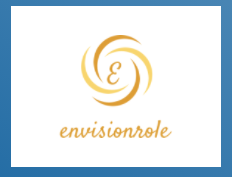Contextual links may be a factor in Google’s ranking.

- Occasional links may be a factor in Google’s ranking.
- The link carries more weight when used contextually than when it is placed randomly in irrelevant content, which does not mean that contextual links negatively affect site rankings.
- External links are often outside the control of the site owner.
- Contextual links are deep links from web page content.
- This content plays a major role in determining the uniqueness and relevance of a web page.
- They help search engines develop relevant factors for both pages, i.e. linking & linked ones.
- Inbound links are a ranking signal and vary greatly in the way they are weighed by Google.
- One of the key features that experts say can separate a high-value link from a low-value link is the context in which it appears.
- When a link is placed in a relevant context, it is assumed that it has a greater impact on the rankings than a randomly inserted link in an unrelated text.
- “Contextual link” refers to the inbound link that represents the URL of the content to which the link appears.
- When linking to an article source to provide additional context for the reader, for example, it is a contextual link.
- Contextual links add value rather than a distraction.
- They flow naturally with the content, giving the reader some clue about the page they are being directed to.
- Not to be confused with the anchor text indicating the clickable part of the link, the contextual link is defined by the surrounding text.
- The anchor text of the link may be relevant to the webpage it represents, but if it contains irrelevant content, it will not qualify as a contextual link.
- Contextual links are said to be a factor in Google’s ranking, with arguments that search engines weigh more than other types of links.
- One of the reasons Google cares about the context when it comes to links is the experience it creates for users.
- When a user clicks on a link and comes to a page related to what they have been looking at before, it’s a better experience than redirecting them to an uninteresting webpage.
- Advanced guides on link building recommend getting links from all relevant URLs, as opposed to going out and placing links anywhere.
- Quality is now more important than quantity when it comes to link building and the link is considered high quality when its placement makes sense in context.
- A high-quality contextual link can be worth more than multiple low-quality links.
- Experts, therefore, advise site owners to get at least some contextual links, as this will take them even further than building dozens of random links.
- Google crawlers can understand web pages and estimate how closely they relate to other URLs on the web if they keep the quality of Google links more or less contextual.
Evidence for contextual links as a ranking factor:
- By enabling the Penguin Algorithm update can find evidence that supports contextual links as a ranking factor.
- Google’s algorithm, PageRank, is built entirely on links.
- The more links that refer to a website, the more authoritative it is considered.
- Websites can put their site at the top of Google search results by generating as many links as possible.
- No links were selected (or deprecated) more than others until Google’s PageRank algorithm was upgraded with the Penguin update.
- Penguin has made a number of changes to Google’s algorithms that make it difficult to change search rankings through spam link building practices.
Links with context share the following features:
- Naturally matches the placement content.
- The linked URL is related to the article.
- Readers know where they are going when they click on it.
- Documentation published by Google over the years about the penguin is strong evidence available in support of contextual links as an overall ranking factor.
- Occasional links may be a factor in Google’s ranking.
- The link is heavier when used contextually than when it is placed randomly in unrelated content.
- But this does not mean that irrelevant links can negatively affect site rankings.
- External links are often outside the control of the site owner.
- Do not have to worry if the website is linked contextually, because Google can ignore low-value links.
- If Google detects a pattern of unnatural links, it will be considered against the site rankings.
- If have been actively involved in non-contextual link building in the past, it is a good idea to consider using a rejection tool.
Link stability is a Google ranking factor:
- Some believe that the stability of website links or the duration of links remains unedited on the page, generating signals used by Google’s algorithms.
- Let’s look at claims related to link stability as a ranking factor, where they came from and if there is any evidence to back them up.
- The link is described as consistent when on the webpage for a long time without any changes – changes such as changing the URL and making adjustments to the anchor text can interfere with the stability of the link.
- It is said that a website has a high “link churn” when it makes frequent changes to the outbound links on its web pages.
- Google has filed a patent describing a possible upgrade to its search algorithm, where the link is used as a ranking factor.
These are simplified by three points:
- Algorithm Update Website Link Chern evaluates. That evaluation is used to adjust the amount of weight given to the outbound links.
- The link chain is calculated based on how often links and/or anchor text change on a particular website.
- Google may fine websites if their link exceeds a certain threshold.
- Since the appearance of this patent, there have been claims that maintaining link stability to search rankings is a factor.
Evidence for link stability as a ranking factor:
- Google’s patent referencing link has been re-filed.
- The archive is viewable on the web but has been edited several times.
- Today’s patent version does not specify a link chair or anything like that.
- If link stability is ever a ranking factor, it is a strong indicator that it has not been relevant for years.
- Companies file patents with ideas that never enter the market.
- Google occasionally reminds us that not everything that is patented can be used in search results.
- There is no conclusive evidence that Google measures the rate at which websites edit their outbound links.
- Furthermore, there is no evidence that making modifications to outbound links can create a negative signal called a link chair.
Internal links as a ranking factor:
- The gossip surrounding internal links as a ranking factor seems to be coming from the endless game of the telephone rather than the real source, search engines.
- Some mythical SEO stories about internal links have been provided by generations of SEO professionals.
- An internal link is a hyperlink from a page in the domain to another page in the same domain.
- Internal links help individuals navigate websites and create site structures for hierarchy.
Internal linking can have positive or negative effects:
- NinjaOutreach increased its site traffic by 50% in three months with the construction of its internal link.
- The Daily Mail failed to overtake its competitors due to weak internal linking.
- Google’s patent site explores the architecture of ranking documents based on user behaviour or feature data.
- Broken internal links make it difficult for search engines to index pages and navigate the site.
- Broken links can affect the sign and rankings of a low-quality site.
- Google does not download more than 100k of a single page (which is no longer the case), so it makes sense that the links distribute the page rank.
- There is some truth in the myth that there is a connection to rankings in internal links and search engines.
- SEO professionals use to sound more secretively.
- Nofollow has been an HTML feature for 14 years.
- Nofollow is a hyperlink feature that tells Google not to pass PageRank, so Google does not crawl the links made in Nofollow.
- Control following any links on the site (whether related to external sites or internal pages) with the simple addition of the Nofo feature.
- There are also unregulated unfollowed links – when linking to another site but marking it as a no-follow link.
- Links in Nofo are not just a glorified attribute.
- This is a way for search engines to ignore spam or low-quality links.
- Consider nofollow links as a shield to protect the site from obscure tactics.
It looks like this in the source code:
<a href=”http://www.example.com/” rel=”nofollow”> Anchor Text </a>
- Google has introduced a nofollow link feature to help website owners fight spam.
- Google has asked sites to add a link feature to Nofa if they are exchanging links.
- If not, Google may impose a fine on link schemes.
- The nofollow tag tells search engines to ignore the destination URL.
- Google has introduced two new features to support nofollow links: sponsored links and UGC links.
- These features were created to help Google understand the intent behind the link.
- Sponsored links (rel = “sponsored”) are used for advertising, advertising or sponsored links.
- UGC links (rel = ”UGC”) are used by users who do not approve of their own content from an advertising perspective.
- Adding a nofollow tag attribute to the link does not mean that Google will index or crawl the site.
- The best way to protect the crawl budget is to use the noindex feature or otherwise allow robots.txt files.
- Links with the tag in nofollow are no longer ignored, but they do not pass ranking signals.
- While it’s interesting to see that links in Nofo do not directly affect the rankings, it is clear from looking at the short references it provides to Google and search engines.
- These “suggestions” that we provide to Google mean that anyone can tell Google to follow the link, but in “some” cases the final decision rests with Google.
